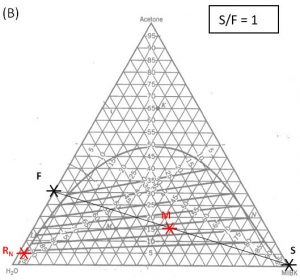

The maximum concentrtions of the dominant anionic components in amine solvents are as follows: sulfate-500 ppm acetate-1000 ppm glycolate-500 ppm oxalate-250 ppm formate-500 ppm chloride-500 ppm respectively. The reaction between MDEA, H 2S, and CO 2 forms heat stable salts (HSS) that cannot be regenerated through heating. Usually, this is done using an amine-based solvent such as methyl diethanolamine (MDEA). Therefore, the removal of undesirable species is an important part of natural gas sweetening industries. Natural gas is a nonrenewable energy source that usually contains undesirable spe-cies such as hydrogen sulfide (H 2S), and carbon dioxide (CO 2), which as well as being harmful to human health cause problems such as corrosion, plugging, freezing, erosion, and environmental hazards.

While the driving pressure is affected by the feed flow conditions and feed pressure. The results showed that the recovery and rejection ratios of the NF membrane depend on the driving pressure across the membrane. Also, the effect of operating conditions (including feed pressure and feed flow rate on ions rejection and recovery ratio across the flat-sheet membrane) was studied. The results showed that the calculated data from the model provided a good agreement with experimental results (R 2 = 0.90–0.75). Correlation between feed concentration and permeate concentration, using experimental results with mathematical correlation as C i,p = f (C i,f) was used in modeling. In this paper, the performance of the ternary ions was investigated during the removal process from methyl di-ethanol amine solution by the nanofiltration membrane process. This model studies the physics of the nanofiltration process by adjusting and investigating pore radius, the effects of membrane charge, and other membrane characteristics. A modeling study was carried out for the removal of HSS ions from amine solution using nanofiltration (NF) membrane process that ensures the reuse of amine solution for gas sweetening. The formation of heat stable salts (HSS) during the natural gas sweetening process by amine solvent causes many problems such as corrosion, foaming, capacity reduction, and amine loss.


 0 kommentar(er)
0 kommentar(er)
